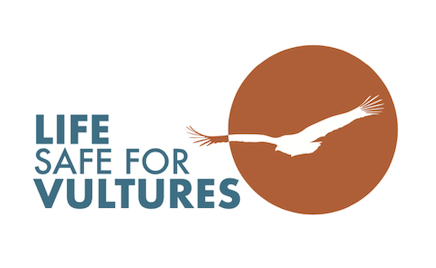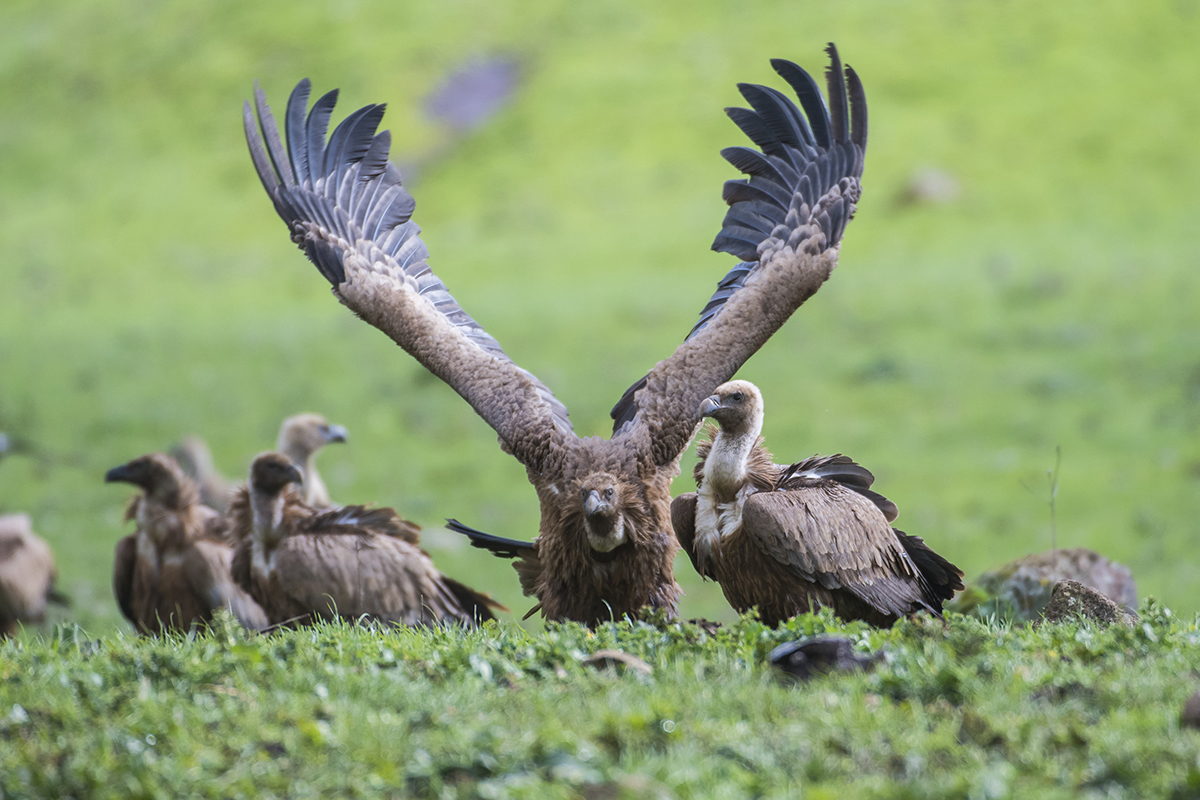
The Griffon Vulture numbers in Sardinia are booming thanks to the ongoing conservation efforts on the island! The latest LIFE Safe for Vultures census showed an increase in the local population, affirming the positive trend observed in recent years.
2022 Griffon Vulture census results in Sardinia
The new estimate of the Griffon Vulture population in Sardinia is 316 to 338 individuals. These results emerged from the simultaneous census carried out on a sunny day. On 12 November 2022, 45 observers equipped with binoculars, scopes and monitoring sheets spread across 15 stations from La Corte to Sindia to Porto Conte and Ittireddu to count vultures for four hours while noting down their flight direction and behaviour.
The census was coordinated by the Department of Veterinary Medicine of the University of Sassari and received valuable support from expert ornithologists and the associations Lipu, L’Altra Bosa and Earth Gardeners. The census would not be possible without the many volunteers’ commitment, expertise, participation and passion, from the experienced observers who have been scanning the Sardinian skies for 40 years to the young students who picked up binoculars for the first time.
Importance of monitoring Griffon Vulture numbers in Sardinia
The simultaneous census of Griffon Vultures on the island is one of the key activities planned within the LIFE Safe For Vultures, which aims to ensure the long-term survival of the species in Sardinia.
It’s crucial to regularly monitor the size of the population to assess the effectiveness of the conservation actions carried out so far in the continuity of the LIFE Under Griffon Wings project, which has focused on north-western Sardinia. It also plays a vital role in adequately evaluating the actions underway within the ongoing LIFE Safe for Vultures project to mitigate the threats to the Griffon Vultures’ survival and promote the extension of their range to north-eastern and central Sardinia and to the two southern slopes of the island, the west and the east.
Bringing together the vulture conservation community
“The census is always an opportunity to bring together what we like to call the Griffon Vulture community in Sardinia,” says Fiammetta Berlinguer, a lecturer in the Department of Veterinary Science and the Scientific Manager of LIFE Safe for Vultures. “This activity is fundamental and is only possible thanks to the willingness of people and associations that contribute to the preservation of the species with their valuable support and different capacities,” adds Berlinguer. She further remarks that “the increasing Griffon Vulture population on the island confirms the positive impact of the work being carried out within the project, which is about to get into full swing.”
Mauro Aresu, who has been dedicated to the study of the Griffon Vulture in Sardinia and particularly in the Bosano area since 1979, also participated in the 2022 census. Aresu states, “the recent data confirm the positive trend of the Sardinian Griffon Vulture population, with an increase of about 20%, in line with the objectives of the LIFE Safe for Vultures project.”
LIFE Safe for Vultures

LIFE Safe for Vultures is a new project co-financed by the EU’s LIFE Programme, acting as the first step to the restoration of the vulture guild in Sardinia. The University of Sassari leads the project in collaboration with Agenzia Regionale Forestas, Sardegna Corpo Forestale, E-Distribuzione and the Vulture Conservation Foundation. LIFE Safe for Vultures builds on the work of the successful LIFE Under Griffon Wings, with the ultimate objective for Griffon Vultures to regain their historic ranges and distribution areas from the central-eastern part of Sardinia to the south and at the same time promote the long-term survival of the species on the island. The project team is working to expand the network of farm feeding stations, create several anti-poison dog units to tackle wildlife poisoning, establish an additional feeding station in the south of the island, restock the population by importing 40 additional Griffon Vultures and reduce the threat of collision and electrocution with energy infrastructures.




